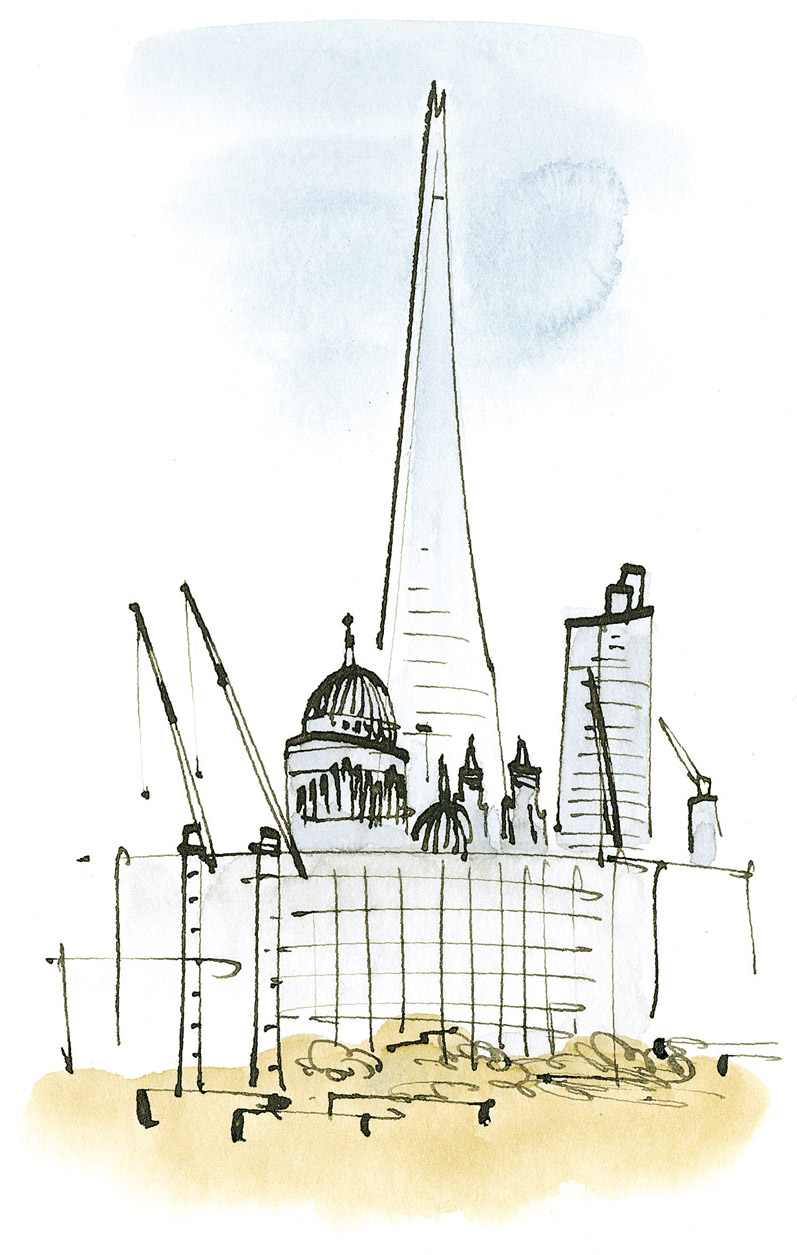Heath
There are two southerly approaches to Hampstead Heath’s Parliament Hill; either of them will take you to the best views of the City and the West End.
The heath itself is far bigger, wider, hillier and more varied than any other open space in London. Walking across it is delightful and exhilarating, and drawing it is like being in the country. Different bits of it have their own character. There are the kite flyers and the panorama from the heights of the hill; the ponds at the heath’s edges, connected by streams, home to swans, ducks and seagulls; the undulating slopes of the main central area, threaded with trees and stretches of woodland – and although there are plenty of paths it’s still quite easy to lose one’s way there, though never for very long.
Because there is so much unsheltered space on the heath, weather and season greatly affect one’s impressions of it. In spring, its wild flowers grow densely on the slopes, and there are acres of buttercups in the meadows. In late summer, the long grass turns yellow, and the trees become a good foil to the distant City and Canary Wharf. In autumn, as the leaves drop off, you can see through copses and woodland again. In winter, the paths get muddy and slippery and the whole heath seems wilder and bleaker, but remains as lovely as ever. I first came here to escape the city bustle sixty-seven years ago and I’ve been returning ever since.





The heath is quieter on weekdays than at weekends, though not necessarily preferable, people being part of its interest – kite-flying, running, walking dogs, playing games, sitting on benches stretching out on the grass when its hot – and usually talking. There are many old or fallen trees and the heath’s ecological approach to their conservation leaves them to disintegrate at their own pace, which makes them much more interesting to draw than if they had been chopped neatly up and the bits taken away.








The heath’s most memorable subjects are its views of the City, appearing beyond its own contours, hummocks and depths, and the skies themselves, with or without kites. These wonderful skies remind me of Suffolk landscapes and of Constable. Being able to sketch a landscape used to be a required skill for young army officers. Walking on the heath is more energetic than strolling in the park with the interplay of people, the immediate surroundings and the background, the snatches of unbuttoned conversations you can’t help overhearing. I also like the heath’s own sounds: the seagulls, swans, cygnets, ducks, moorhens and coots on the streams and ponds, the crows and jays and magpies. The noisiest and most visible are the flocks of green parakeets – there were none there when I first got to know it.


